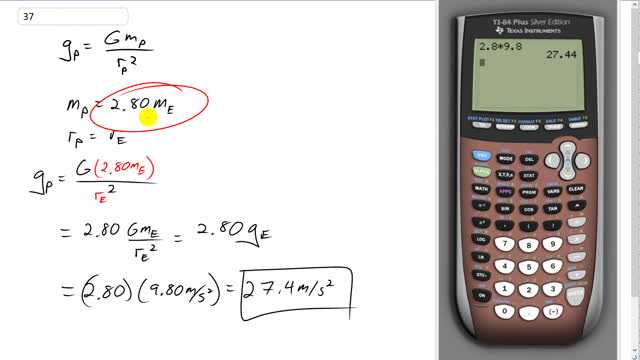
A hypothetical planet has a mass 2.80 times that of Earth, but has the same radius. What is g near its surface?

In order to watch this solution you need to have a subscription.
This is Giancoli Answers with Mr. Dychko. The acceleration due to gravity on the planet is the gravitational constant times the mass of the planet divided by the radius of the planet squared. We are told that the mass of the planet is 2.8 times the mass of the Earth. And the radius of the planet is the same as the radius of the Earth. So we make substitutions into this acceleration due to gravity for the planet formula and we'll put in 2.8 times mass of the Earth in place of mass of the planet; then we'll put in radius of the Earth instead of radius of the planet there. And if we move things just slightly, we can see that it's 2.80 times G m E over r e squared. But this whole thing is the acceleration due to gravity on the Earth so it's 2.80 times the regular little g. So it's 2.80 times 9.8 meters per second squared which is 27.4 meters per second squared.